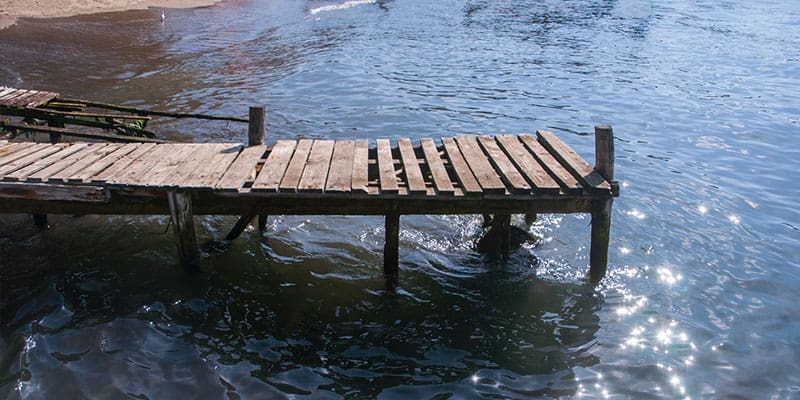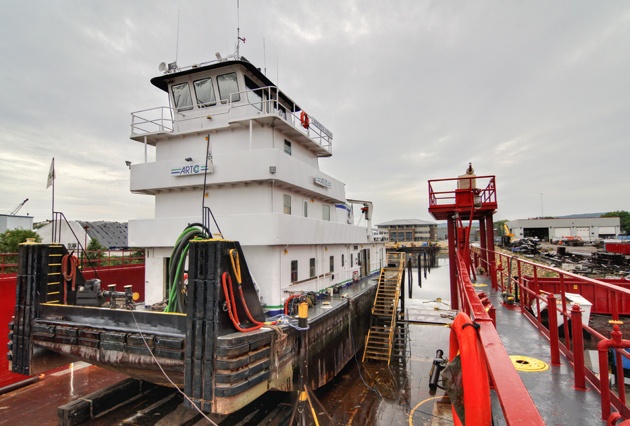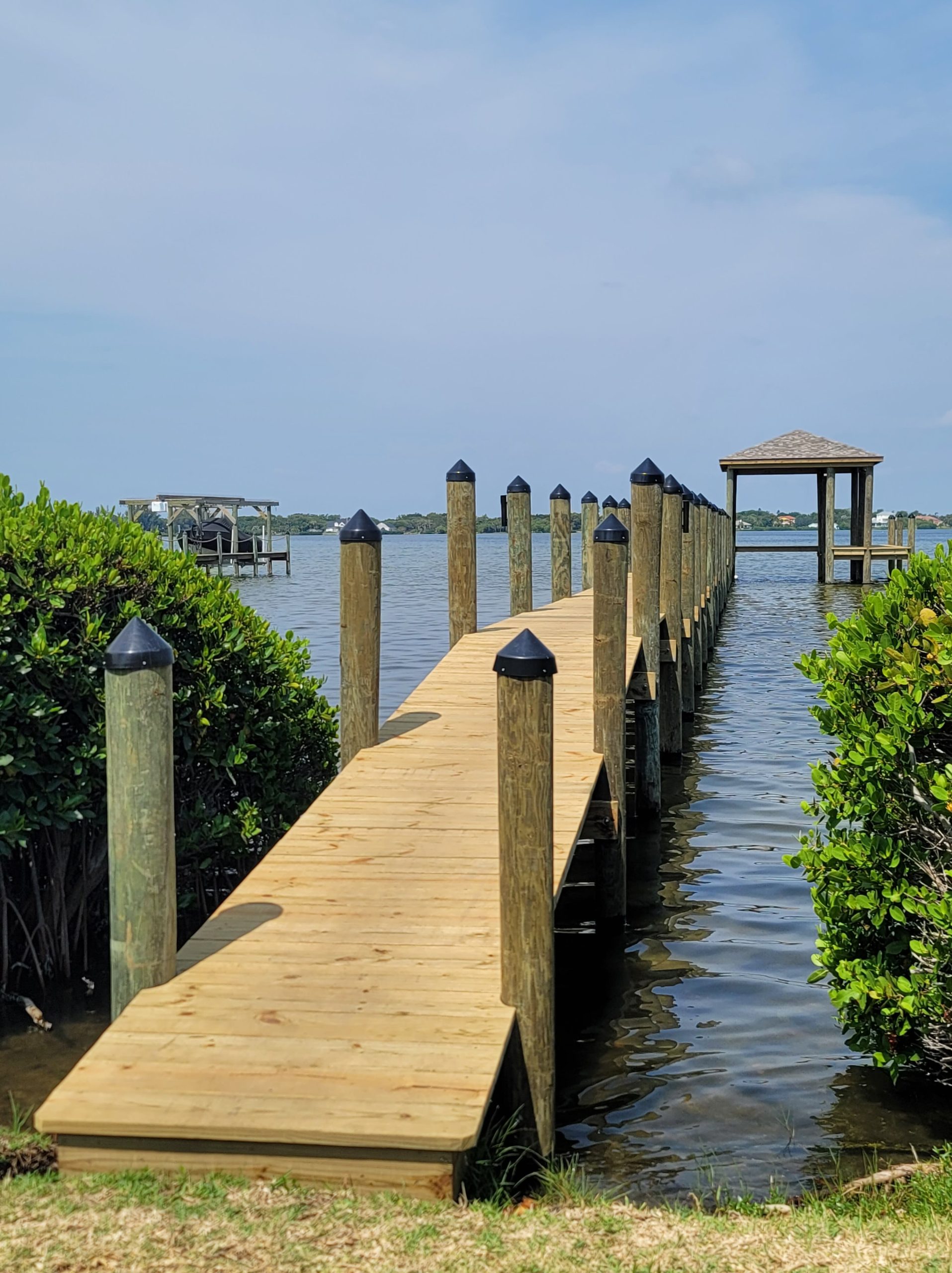Effective Dock Fixing Techniques: Ensuring Architectural Stability
Making sure the architectural honesty of anchors through efficient repair service methods is vital for the long life and safety of marine facilities. This entails a multi-faceted strategy beginning with detailed assessments utilizing advanced modern technologies like finder equipment and from another location operated automobiles (ROVs) to find both visible and hid problems. Ultimately, selecting the best repair service products, such as corrosion-resistant alloys and composite products, is essential for longevity. Structural reinforcement techniques, consisting of the execution of cross-bracing systems and load-distribution plates, play a crucial duty in mitigating stress and anxiety factors. Nonetheless, the importance of these techniques becomes apparent when discovering advanced repair approaches and preventative upkeep methods.
Assessing Dock Damage
Evaluating dock damages is a critical first step in making certain the structural stability and security of any kind of docking center. This initial assessment entails a comprehensive evaluation to determine both hidden and visible problems. Trick facets to analyze consist of the dock's structure, pilings, decking, and equipment. Each element has to be inspected for indicators of wear, rot, corrosion, or various other types of destruction that might endanger the structural integrity.
Architectural engineers or certified inspectors commonly do these analyses using specialized devices and strategies. For instance, undersea assessments could use sonar devices or from another location ran lorries (ROVs) to spot submerged damage. Above water, visual assessments are matched by utilizing dampness meters and other diagnostic devices to uncover underlying concerns not instantly visible to the nude eye.

Deciding On Repair Work Products
Selecting the proper repair materials is a crucial action in the dock remediation process, one that straight affects the long life and performance of the fixed framework. Material choice have to be driven by aspects such as environmental problems, load-bearing requirements, and compatibility with existing dock elements. Timber is a standard option for docks due to its natural strength and visual appeal. Choosing the appropriate type of wood, such as pressure-treated lumber or normally rot-resistant types like cedar or teak wood, is vital to stand up to water atmospheres.
Along with wood, composite materials are significantly popular as a result of their sturdiness and low maintenance demands. Compounds, commonly made from a blend of plastic and wood fibers, supply outstanding resistance to rot, bugs, and UV damages. For metal docks, selecting corrosion-resistant alloys such as galvanized steel or marine-grade aluminum is necessary to protect against corrosion and guarantee architectural honesty in saline water conditions.
Epoxy materials and marine-grade sealers are crucial for fixing splits and securing joints, providing a waterproof barrier and improving the dock's total toughness. By carefully selecting high-quality products, dock repair work can attain durable outcomes, thus protecting against future deterioration and making certain safe, reliable usage.
Architectural Reinforcement Strategies
Effective structural support techniques are crucial in making certain the stability and longevity of dock repair work. One essential technique entails using steel or composite reinforcement bars (rebar) within concrete structures. Rebar gives added tensile strength, protecting against cracks and distributing tons much more evenly. This technique is particularly effective for docks exposed to heavy tons or rough environmental problems.
Another vital technique is the application of fiber-reinforced polymers (FRP) These materials offer high strength-to-weight proportions and exceptional resistance to rust, making them perfect for enhancing concrete or wooden docks. FRP can be used in strips or sheets and bound with epoxy resins to boost architectural integrity.
Bracing and securing systems likewise play a vital function in architectural reinforcement. Cross-bracing, using steel or wooden light beams, can combat side forces, decreasing swaying and activity. Anchoring systems, such as helical piers or driven heaps, supply a steady structure by moving loads to much deeper, a lot more steady soil layers.
Last but not least, the see post assimilation of load-distribution plates can assist distribute weight more equally throughout the dock's surface, minimizing localized stress and anxiety factors. These techniques jointly guarantee that docks remain durable and safe, efficient in standing up to the rigors of their operational atmosphere.
Advanced Repair Work Methods

Another innovative technique includes undersea welding, which permits repairs to be conducted without the demand to dewater the location. This approach is particularly beneficial for addressing structural problems in immersed dock components, guaranteeing very little disturbance to operations. Enhanced welding techniques, paired with robotic systems, supply precision and reliability, thus expanding the life expectancy of the dock.
Furthermore, cathodic protection systems are applied to protect against corrosion in metal dock frameworks. By making use of sacrificial anodes or satisfied present systems, these methods successfully minimize the electrochemical procedures that result in material wear and tear.
Finally, advanced monitoring technologies, such as architectural health and wellness monitoring (SHM) systems, offer real-time data on the condition of dock structures. These systems make it possible for aggressive upkeep and prompt interventions, eventually guaranteeing the long-lasting structural integrity of the dock.
Maintenance and Prevention
Maintenance and avoidance are essential ideas that underpin the durability and safety of dock frameworks. Normal examinations are paramount, enabling early discovery of deterioration, prospective weaknesses, and ecological effects. A proactive strategy, involving routine checks for deterioration, rot, and structural changes, minimizes pricey repair services and lengthens the dock's operational life.
Safety nets ought to include using protective layers to metal components to defend against corrosion and using treated timber to withstand degeneration. Additionally, making certain proper water drainage and ventilation can prevent water build-up, which is an usual source of architectural degradation. Including high quality materials and sticking to manufacturer guidelines during building and click reference repair work stages likewise play essential duties in improving sturdiness.

Educating personnel in dock maintenance best practices makes sure consistent application of safety nets. Leveraging technical developments, such as drones for examinations and sensing units for real-time tracking, can even more enhance upkeep initiatives. By prioritizing maintenance and prevention, dock proprietors can make certain architectural stability, operational safety and security, and cost-efficient administration over the dock's life expectancy.
Conclusion
In verdict, maintaining the structural stability of aquatic centers necessitates detailed dock fixing techniques. Advanced repair service strategies, coupled with regular maintenance methods, guarantee the dock continues to be operational and risk-free under varied environmental conditions.
Making sure the architectural honesty of docks through reliable repair methods is critical for the durability and safety and security of aquatic centers.Picking the ideal repair service materials is an essential step in the dock restoration process, one that directly influences the durability and efficiency of the fixed framework.Effective architectural reinforcement methods are essential in making sure the security and longevity of dock repairs. By prioritizing upkeep and avoidance, dock proprietors can ensure architectural honesty, functional safety, and cost-efficient management these details over the dock's life expectancy.
In conclusion, maintaining the structural honesty of marine facilities requires comprehensive dock fixing strategies.